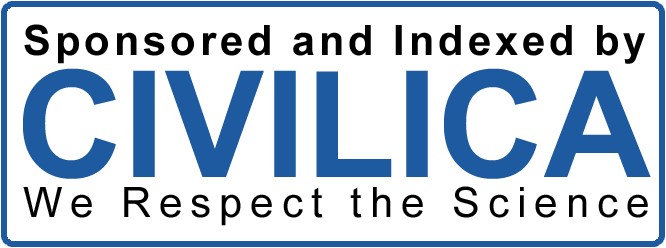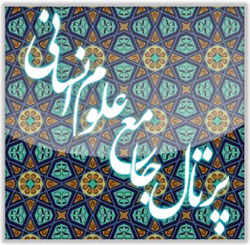Examining the Security Policies of the Islamic Republic of Iran in West Asia Based on the Discourse Analysis Method
Keywords:
Discourse analysis method, security, West Asia, Islamic Republic of IranAbstract
The discourse analysis method is one of the qualitative methods in political studies, employed to explain semantic systems that lead to the formation of a particular understanding regarding the role of individuals or actors within society or the international environment. The primary objective of employing this analytical method is to examine the ways and mechanisms through which a semantic system and discursive framework make a specific action or policy possible. To date, numerous studies in the field of political science have been conducted using the discourse analysis method. The main goal of this research is to apply discourse analysis to explain the security policies of the Islamic Republic of Iran in West Asia. Accordingly, the central research question is: how can Iran's security policies in West Asia be explained through the lens of discourse analysis? In response to this question, the hypothesis of the study posits that the Islamic Republic of Iran has sought to define its security policies in the West Asian region through the construction of a discursive articulation that transcends political and geographical boundaries. This articulation, in turn, has led Iran to play a more active role in the targeted region. The findings of the study indicate that the central signifier of this discourse revolves around the cessation of meaning-making with reference to the nodal point of liberating Jerusalem and the anti-Israeli stance, viewing Israel as a usurping regime. The research methodology employed in this study is descriptive-analytical, based on discourse analysis. Data collection has been carried out through documentary and library methods, utilizing both accessible and credible physical resources such as books and electronic resources, including academic books and articles published in scholarly journals.
Downloads
References
Abbasi, M., Hamidfar, H., & Kahrezi, F. (2019). The Syrian Crisis and the Clash of Two Different Strategies of Iran and Turkey in Crisis Management in West Asia. Politics and International Relations, 3(1). https://doi.org/http://journals.umz.ac.ir/article_2441_1a49cf5ef80afabbad22a9500151a30f.pdf
Abedi Ardakani, M., & Askari, A. H. (2019). Exploring the Reasons for Aggressive Diplomacy in the Foreign Policy of the Islamic Republic of Iran (2005-2013). Policy Quarterly, 49(2), 431-452. https://doi.org/10.22059/jpq.2019.207293.1006803
Al-Alam, T. V. (2015). Iran seeks to revive the Persian Empire. https://fa.alalam.ir/news/1731738
Al-Dulaimi, S. A. S., Kamal, M., & Elsayed, D. M. (2017). The Impact of Sectarian Conflict in Syria on Iran-Gulf Relations. Asian Social Science, 13(7), 92. https://doi.org/10.5539/ass.v13n7p92
Al-Khalil, S., & Tadaion, A. (1991). Republic of Fear: The Inside Story of Saddam's Iraq.
Amiri, S. (2018). Ratio of Transformations in the West Asia Region to the National Security of the Islamic Republic of Iran. Political Studies of the Islamic World, 8(2).
Asadi, N., Ghanavati, N., & Rezaei Panah, A. (2015). Analytical Framework for Study of the Imam Khomeini's Foreign Policy Discourse (Ideology, Strategy and Diplomacy). Political Strategic Studies, 4(12).
Askari, A. H. (2016). An Analysis of the Foreign Policy of the Islamic Republic of Iran (2005-2013). Sokhanvaran Publishing.
Buzan, B., & Wæver, O. (2015). A new framework for security analysis. Research Institute of Strategic StudiesAU - Tayeb, Alireza.
Dehghani Firouzabadi, S. J. (2010). Foreign Policy of the Islamic Republic of Iran. SAMT Publications.
Dehshiri, M. R., & Mohammad Baqer, K. (2011). The Reflection of the Islamic Revolution of Iran in the Structure and Process of the International System. In. SAMT Publications.
Ehteshami, A., Neil, Q., & Gawdat, B. (2017). Security and Bilateral Issues between Iran and Its Arab Neighbours. In. Palgrave Macmillan. https://doi.org/10.1007/978-3-319-43289-2_1ER -
Gaffar, M. (2015). Iran As A Regional Power In West Asia. Journal of International Issues, 19(3). https://www.jstor.org/stable/48505455?seq=1
Gharayagh Zandi, D. (2012). Non-Provocative Defense: The Strategy of the Islamic Republic of Iran for Reducing the Security Dilemma in West Asia. Strategic Studies Quarterly, 15(57), 71-92. https://doi.org/http://quarterly.risstudies.org/article_2603_9abdf58838bc85190d14527b9098a262.pdf
Gharekhan, C. R. (2011). The New Great Game in West Asia? The Hindu. https://www.thehindu.com/opinion/lead/The-new-great-game-in-West-Asia/article14906660.ece
Ghasemi, F., & Faraji, M. R. (2018). Complexity Theory and Foreign Policy: Iran's Strategies in West Asia. Iranian Political Science Research Journal, 7(1), 113-138. https://doi.org/https://irlip.um.ac.ir/article_29642_1185d5b90feca63672988288d718691e.pdf
Haghighat, S. S., Hosseinizadeh, S. M. A., & Abbas, M. (2013). Discourse. In (pp. 378). SAMT Publications.
Hassanpour, H., & Torshizi Bargouei, A. (2018). Examining the Impact of U.S. Military Base Expansion in West Asia on the Military Security of the Islamic Republic of IranJO - Military Science and Technology. 14(45), 75-91. https://doi.org/http://www.qjmst.ir/article_34521_56edcba2509d7d774a57140e82bfc4c9.pdf
Howarth, D., Aletta, J. N., & Yannis, S. (2000). Discourse Theory and Political Analysis: Identities, Hegemonies and Social Change. https://b-ok.asia/book/2925235/eaf579
Katie, P., & Idrees, A. (2018). Saudi Arabia Says It Is Beacon of 'light' against Iran despite Khashoggi Crisis. ReutersUR - https://www.reuters.com/article/us-bahrain-summit-idUSKCN1N10DD.
Laclau, E. (1990). New Reflections on the Revolution of Our Time. Verso.
Laclau, E., & Mouffe, C. (1985). Hegemony and Socialist Strategy Map of Countries in Western Asia and the Middle East. Verso. https://www.nationsonline.org/oneworld/map/Political-Map-of-Countries-of-Western-Asia.htm
Malek Afzali Ardakani, M. (2014). Introduction to the Constitution of the Islamic Republic of Iran. Maaref Publishing.
Maqsoudi, M., & Shahab, D. (2017). Inflexible Identities: The Main Theoretical Basis of the Conflicts Between the Islamic Revolution and the State of Israel in the Age of Communication. Scientific Specialized Policy Quarterly (Tarbiat Modares University), 15. http://www.modares.ac.ir/uploads/Culture.StuJournals.1117.pdf
Marsh, D., & Stoker, G. (2013). Method and Theory in Political Science. Strategic Studies Research Institute.
Mehr News Agency. (2016). Iran seeks to revive its ancient empire. https://www.mehrnews.com/news/3814955
Mohaddessin, M., Miller, D., & Georgie Anne, G. (1993). Islamic Fundamentalism: The New Global Threat.
Moshirzadeh, H., & Mesbah, E. (2011). The Issue of Israel in the Discourse of the Foreign Policy of the Islamic Republic of Iran. Foreign Relations, 3(9), 245-270. https://www.sid.ir/Fa/Journal/ViewPaper.aspx?ID=122545
Rajaee, F. (1993). The Iran-Iraq War: The Politics of Aggression.
Ramazani, R. (2013). An Analytical Framework for Examining the Foreign Policy of the Islamic Republic of Iran. Ney PublishingAU - Alireza Tayeb.
Salkind, N. J. (2010). Discourse Analysis. SAGE Publications, Inc. https://doi.org/10.4135/9781412961288.n115
Takeyh, R. (2006). Iran, Israel and the Politics of Terrorism. Survival, 48IS - 4, 83-96. https://doi.org/10.1080/00396330601062691
Voskanian, K. A. (2004). Russian to Persian Dictionary. Javdan Kherad Publishing.
Zienkowski, J. (2017). Discourse Theory on the Logics of Articulation, Politics and Subjectivity. In. https://doi.org/10.1007/978-3-319-40703-6_2
Zuckerman, A. (1991). Doing Political Science: An Introduction To Political Analysis (Vol. 1).

Downloads
Published
Submitted
Revised
Accepted
Issue
Section
License
Copyright (c) 1403 بهرام مرادی (نویسنده); محمدعلی عبداله زاده (نویسنده مسئول); مهدی ذاکریان امیری (نویسنده)

This work is licensed under a Creative Commons Attribution-NonCommercial 4.0 International License.







